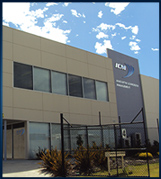Corrosion Assessments
Coating Assesments
ICM provide on-site coating assessments to determine the suitability of existing protective coatings to determine the remaining life expectancy. This assists clients to formulate plans to instigate coating refurbishment activities based on the results of the survey providing a maintenance strategy with consideration of the structures remaining service life. Surveys can indicate hot spots within a facility that may require consideration to prevent possible exposure of the asset to structural integrity issues.
Facility Condition Assessments
It is not common that maintenance personnel have access to a sole document that they can reference which clearly shows the overall condition of the whole facility. Undertaking a facility wide condition assessment allows ICM to provide clients with a total overview of the facility separated into facility areas and then into further sub groups such as tankage, steelwork, concrete, pumps/sumps and piping. This auditing approach enables maintenance personnel to have a total understanding of the condition of the facility with corrosion concerns clearly identified and described with implemental actions for maintenance personnel scheduling and budgeting assistance. The final document can be used as a guide for corrosion management at the facility and can also be used as a comparison when further condition assessments are conducted and original reports cross referenced.
Concrete Condition Assessments
Typically concrete is one asset that is given little consideration within a facility once placed. The selection, design and use of concrete is a result of tried and tested performance data that highlights concrete as one of the stronger foundations for longevity. Nevertheless, dependant on the service environment exposed, it is critical that Concrete Condition Assessments form part of any maintenance strategy within a facility. Each facility is different and this also mirrors in the micro service environments that concrete can be exposed to. Attack from chlorides, sulphates, carbonation and acid attack are some of the most common initiators of concrete deterioration. The main problem with concrete degradation is the evidence of something being wrong is often an indication of significant underlying problems including steel reinforcement bar corrosion, concrete spalling and delamination.
Undertaking Concrete Condition Assessments allows ICM to provide clients with a fitness for purpose analysis which includes the extent of deterioration, causes and the recommendations for halting the continuation of deterioration and the current best practice methodologies for concrete refurbishment dependant on remaining assets service expectancy.
The testing of the concrete varies but can include such undertakings as follows:
- Concrete core removal
- Drummy Survey
- Chloride content by weight of cement
- Sulphate content by weight of cement
- Carbonation front
- Electropotential Survey
Non-Destructive Testing
ICM uses several non-destructive testing (NDT) techniques to assist with the identification of various corrosion/erosion induced flaws.
Low Frequency Electromagnetic Technique (LFET)
Low Frequency Electromagnetic Technique (LFET) is used to provide information on the internal surface integrity or metal loss of a ferrous material.
The LFET inspection system utilises various scanner configurations within a main probe that allows for 100% coverage of the surface below the probe head. The probes emit a very low frequency magnetic field, which penetrates the parent material. Any variation in the substrate thickness will cause the magnetic field to change. These changes are very small, which makes it necessary to use advanced digital signal processing to enhance the received signal. The signal processing is undertaken in real time, which means that the ICM operator can evaluate the data integrity as the data is being collected.
The rate at which the scanner can be moved over the surface means that a large amount of surface area can be covered in a short period of time.
Ultrasonics
Ultrasonic Testing uses high frequency sound energy to conduct examinations and make measurements. Ultrasonic inspection can be used for flaw detection/evaluation, dimensional measurements, material characterization, and more.
A typical Ultrasonic inspection system consists of several functional units, such as the pulser/receiver, transducer, and display devices. A pulser/receiver is an electronic device that can produce high voltage electrical pulses. Driven by the pulser, the transducer creates high frequency ultrasonic sound waves that are introduced and travels through the materials. When there is a discontinuity (such as a crack) in the wave path, part of the energy will be reflected back from the flaw surface. The reflected wave signal is transformed into an electrical signal by the transducer and is displayed on a screen. The reflected signal is displayed versus the time from signal generation to when an echo was received. Signal travel time is directly related to the distance that the wave signal travelled. Information about the reflector location, size, orientation and other features can sometimes be gained from the signal.
Ultrasonics - Non Metallic
Ultrasonic NDT is not restricted to testing only metallic structures. ICM has the ability to test a wide range of materials, especially those that are difficult or impossible to measure using standard gauges. These may include composites, fiberglass, plastic, rubber, etc.
For example, ICM has been doing work testing the thickness of polyethylene (PE) pipe used to transport abrasive mineral sand slurry. During the pipes usage the slurry wears away the inner wall of the pipe eventually causing the pipe wall to fail. Without this testing it is impossible to determine a pipes current condition without physically removing it from the system for a visual inspection. ICM's testing allows pre-emptive action to replace and repair non metallic pipes before failures cause a loss in production time and efficiency.
ICM has been able to effectively and repeatedly measure the thickness in these pipes while still operational. Wear rates have also been established to improve the understanding that we and our clients have of their non metallic piping systems.
Ph: +618 6394 4362 Mobile: +61407 501 509 Email: icm at corrosionmanagement dot com dot au
Address: Suite 7 - 3 Stirk House Canning Road Kalamunda Western Australia 6076 Postal: PO Box 924 Kalamunda Post 6076





